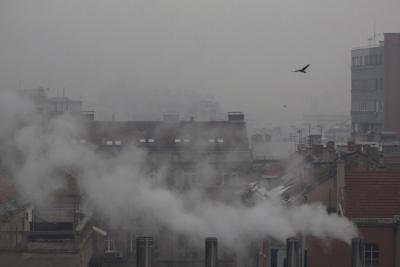
By Karthika Jayakumar
Air pollution in India is taking 5.3 years off the life of an average Indian, a recent study conducted by the Energy Policy Institute at the University of Chicago (EPIC) has revealed. The study measured the effects of air pollution on life expectancy.
Released on Tuesday, August 29, 2023, the study explains how particulate pollution is the greatest threat to human health in India. It focuses on data that shows that fine particulate air pollution remains the greatest external threat to public health. It says although countries such as the USA, Europe, Japan, and most recently China, have significantly been able to reduce air pollution owing to a strong and consistent change at the policy level, countries in Asia and South Africa, however, bear the greatest burden while severely lacking infrastructure, namely, the Democratic Republic of the Congo, Rwanda, Burundi, and the Republic of the Congo which are amongst the ten most polluted countries in the world and Bangladesh, India, Nepal, and Pakistan in South Asia.
The latest Air Quality Life Index (AQLI) published by EPIC also states that in Delhi, the country’s capital, which is the ‘most polluted city’ in the world, life expectancy has shortened by 11.9 years, owing to air pollution.
The report also states that in the Northern plains of the country, 521.2 million residents or 38.9% of India’s total population will potentially lose 8 years of their life on average (as per WHO indicators) and 4.5 years (as per the national standard) if the current pollution levels persist.
“Even in the least polluted district in the region — Pathankot, Punjab — particulate pollution is more than seven times the WHO limit,” says the report.
“Though particulate pollution in the northern plains is exacerbated by geologic and meteorological factors, the AQLI’s dust and sea salt-removed PM 2.5 data implies that human activity plays a key role in generating severe particulate pollution. That is likely because the region’s population density is nearly three times the rest of the country, meaning more pollution from vehicular, residential and agricultural sources”, the report states.
India’s entire population of 1.3 billion people live in areas where the annual average particulate pollution level exceeds the WHO limit. 67.4% of the population lives in areas that exceed the country’s own national air quality standard of 40 µg/m3.
In 2019, India declared a “war against pollution” and launched its National Clean Air Programme (NCAP), signalling a desire to reduce particulate pollution. NCAP originally aimed to reduce particulate pollution by 20-30% nationally, relative to the 2017 levels, by 2024. It focused on 102 cities that were not meeting India’s national annual average PM 2.5 standard. These cities were termed as “non-attainment cities.”
In 2022, the Centre announced its renewed particulate pollution reduction target for NCAP, setting no national goal. The new goal aims for a 40% reduction in particulate pollution in non-attainment cities by 2025-26. If the ambition of the revised target is met, these cities’ overall annual average PM 2.5 exposure would be 21.9 µg/m3, lower than 2017 levels. This would add 2.1 years to the life of the average Indian living in these cities and 7.9 months to the life of the average Indian across the country.
According to a study by the Lancet on Pollution and Health, that came out in 2022, 2.3 million Indians died due to pollution in 2019, out of which 1.6 million deaths were on account of air pollution. It states how India remains one of the worst affected. In the same year, India’s average particulate matter concentration was 70.3 µg/m³, the highest in the world.
A 2022 report released by the Swiss technology company IQAir stated that on average, India had the 8th most polluted air and that its cities constituted a dozen of the 15 most polluted cities in the world. “According to the World Bank’s report on Air Pollution in South Asia 2022, air pollution causes an estimated two million premature deaths across the region each year and incurs significant economic costs,” IQAir said.
Other sources such as the combustion of solid fuels for cooking and heating, emissions from small industries such as brick kilns, burning of municipal and agricultural waste, and cremation, also significantly contribute to air pollution in India, the report says.
Other countries across South Asia are beginning to take policy actions. Nepal has instituted an Air Quality Management Action Plan for Kathmandu Valley and adopted various other policies to control emissions from vehicles and industries and manage air quality. In Pakistan, the government is installing more pollution monitors and shutting down factories in highly polluted districts during the winter months when energy demand soars. Similarly, Bangladesh has doubled its monitoring capacity and real-time air pollution measurements now cover eight of its cities.
The real test for these policy changes in South Asia will be if they are able to make the air cleaner and lengthen average life expectancies in the region.



